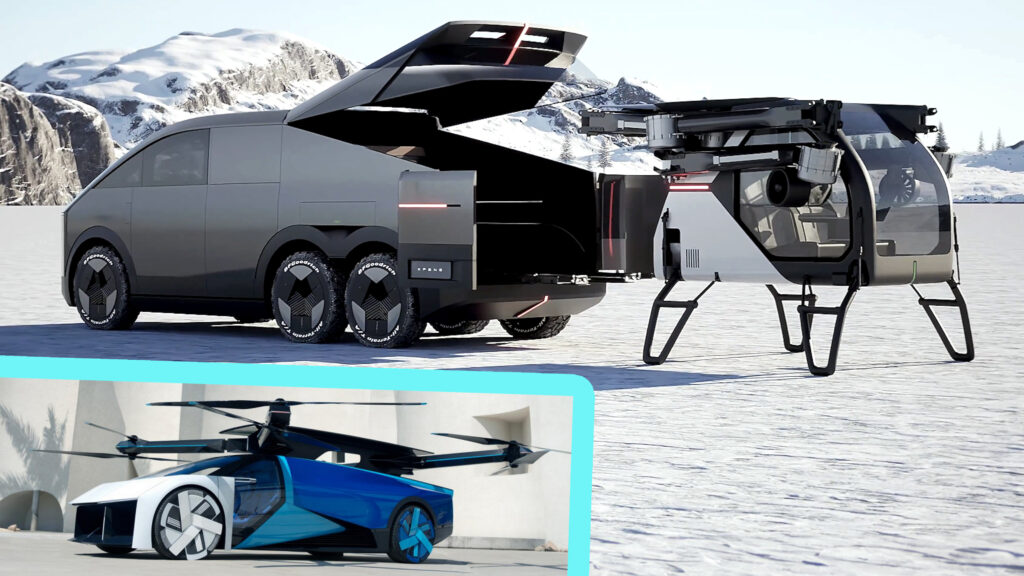Xpeng has revealed a flying car that really looks like a car and (if that doesn’t work out) a van that contains a drone inside it that could help search and rescue organizations
2 hours ago
 –>
–> 
–>
The future of electric vertical takeoff and landing (eVTOL) vehicles holds a lot of Jetsons-like promise, but so far, not many companies have introduced a flying car that, well, actually resembles a car. However, Xpeng AeroHT has now unveiled a pair of concepts that look like they’ve been plucked straight out of the pages of a sci-fi comic book, adding a touch of futuristic flair to the eVTOL landscape.
Making their grand entrance at the Xpeng Tech Day, the company’s flying car concept might initially be mistaken for a sleek, if somewhat strangely proportioned supercar. However, the intriguing reason behind its unusually elongated rear end becomes abundantly clear once it seamlessly morphs into its flying mode.
Read: China’s New Xpeng AeroHT Is An Actual Car That Flies
advertisement scroll to continue
Out of the back, four arms emerge and extend, holding eight propellers that turn the car into a flying vehicle at the touch of a button. It won’t surprise you to hear that details are light on this futuristic prototype, but the company has been working on ways to store the props without damaging them. The concept also features a steering wheel that hides away to give the driver better access to a joystick while it’s flying.
Xpeng AeroHT has said that it expects its first flying car to tip the scales at 2,204 lbs (1,000 kg), and prices are expected to start at 1 million Yuan ($136,666 USD at current exchange rates), reports Car News China. The company also said it would launch its first flying car in 2024, but it’s unclear if it will be able to actually achieve that goal.
Xpeng AeroHT Modular Flying Car
[embedded content]
To speed up development, it’s looking at other flying vehicle solutions, like the Modular Flying Car. Rather than trying to make an eVTOL that also works as a car, the company has decided to make one that’s small enough to fit inside a van.
Capable of accommodating up to five passengers, the van is referred to as the ‘mothership’. It has three axles, all of which can be powered by electric motors. However, Xpeng AeroHT envisions this as an extended-range EV, meaning that it has an internal combustion engine to generate power for both its own needs and those of the eVTOL.
The flying portion of the vehicle is big enough for up to two passengers, and can be flown by a pilot or by its own autonomous systems. It also has a 270-degree field of view out of its cockpit, offering gorgeous views and plenty of visibility.
While Xpeng is certainly open to selling the aircraft carrier to private consumers, it says that it could also be useful to emergency rescue services. And it’s not hard to imagine how such a vehicle might indeed be useful in a search and rescue mission.
It’s not yet clear when either of these vehicles (or later developments of them) will be available to the public. However, Xpeng says that civil authorities in China are working to find safe ways to deploy these technologies safely. Similar efforts are being undertaken in the U.S.
[embedded content]

